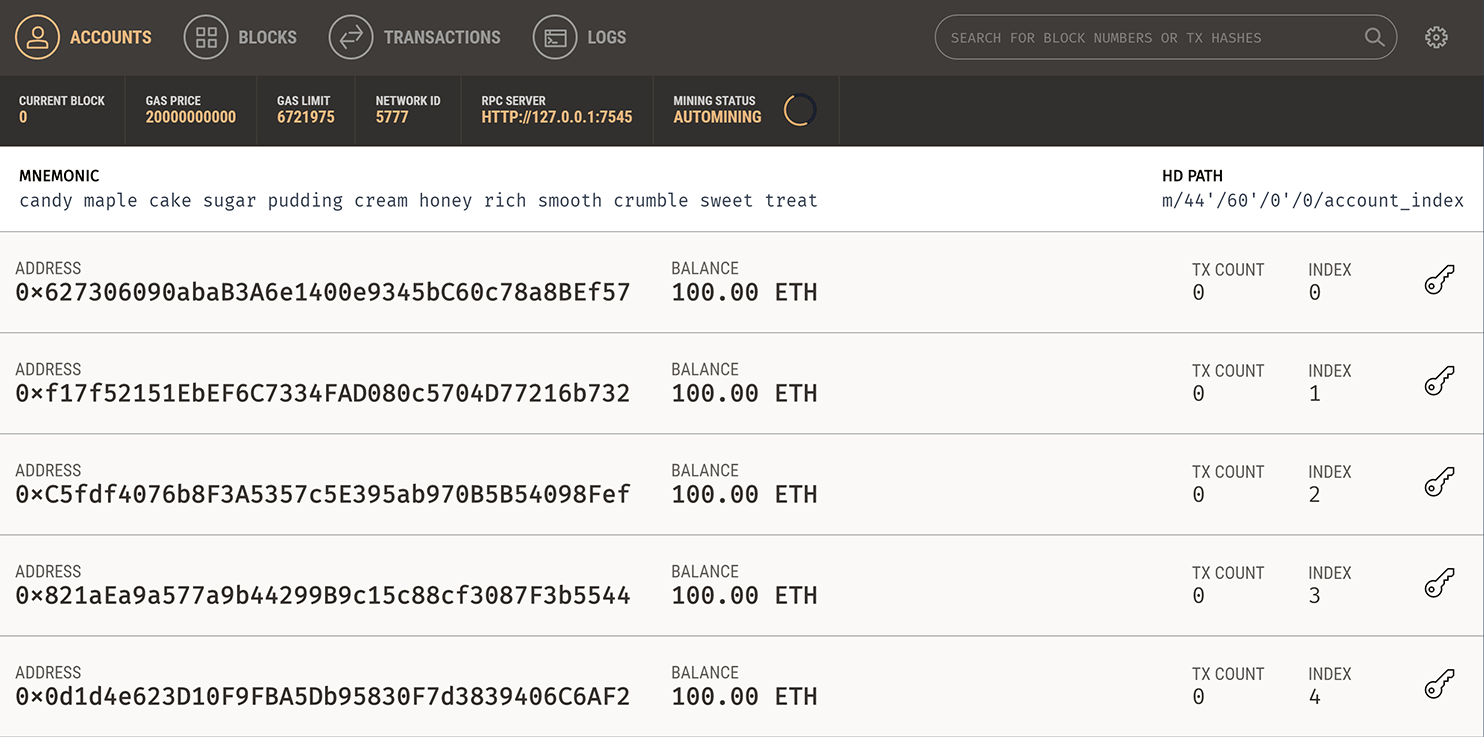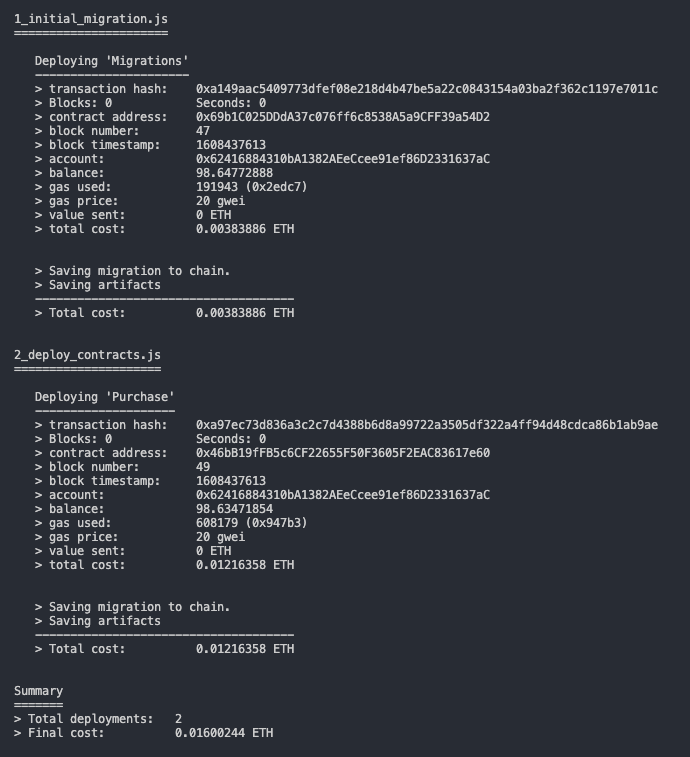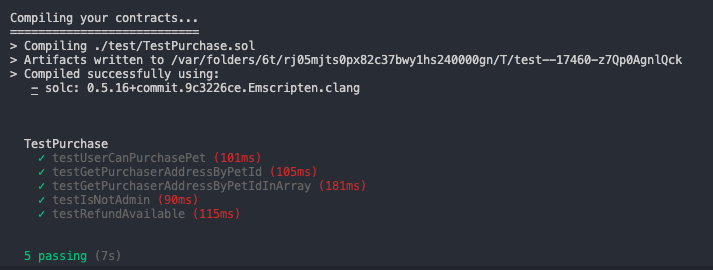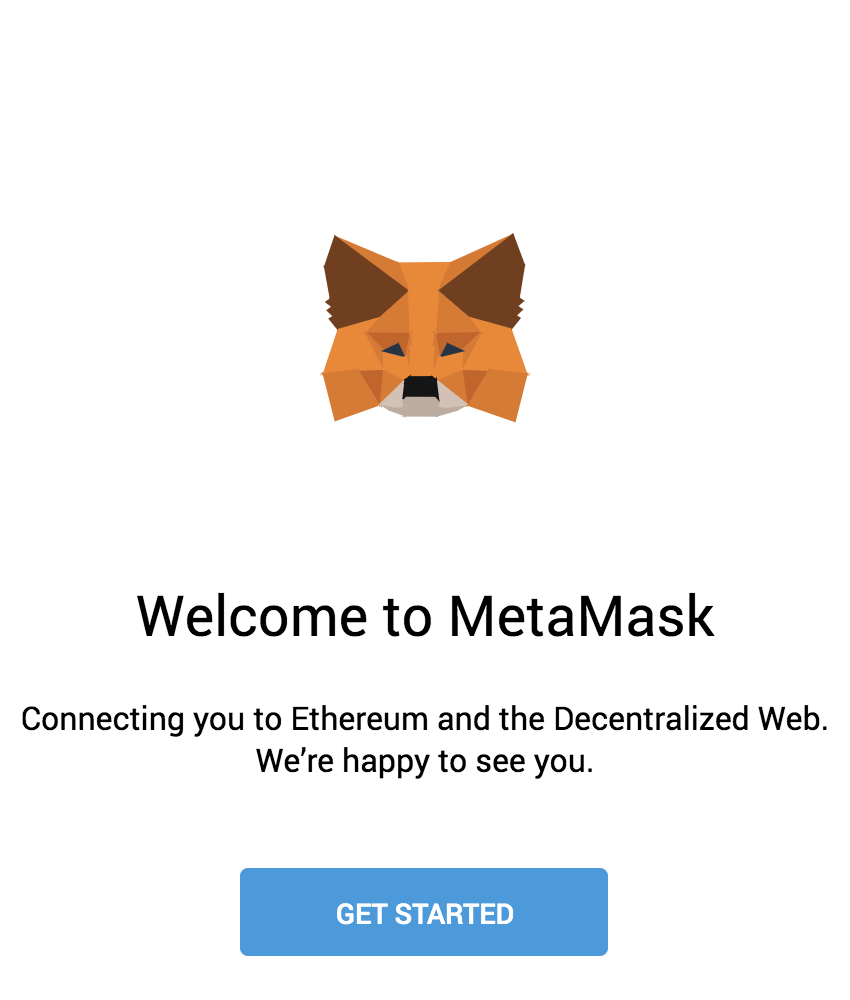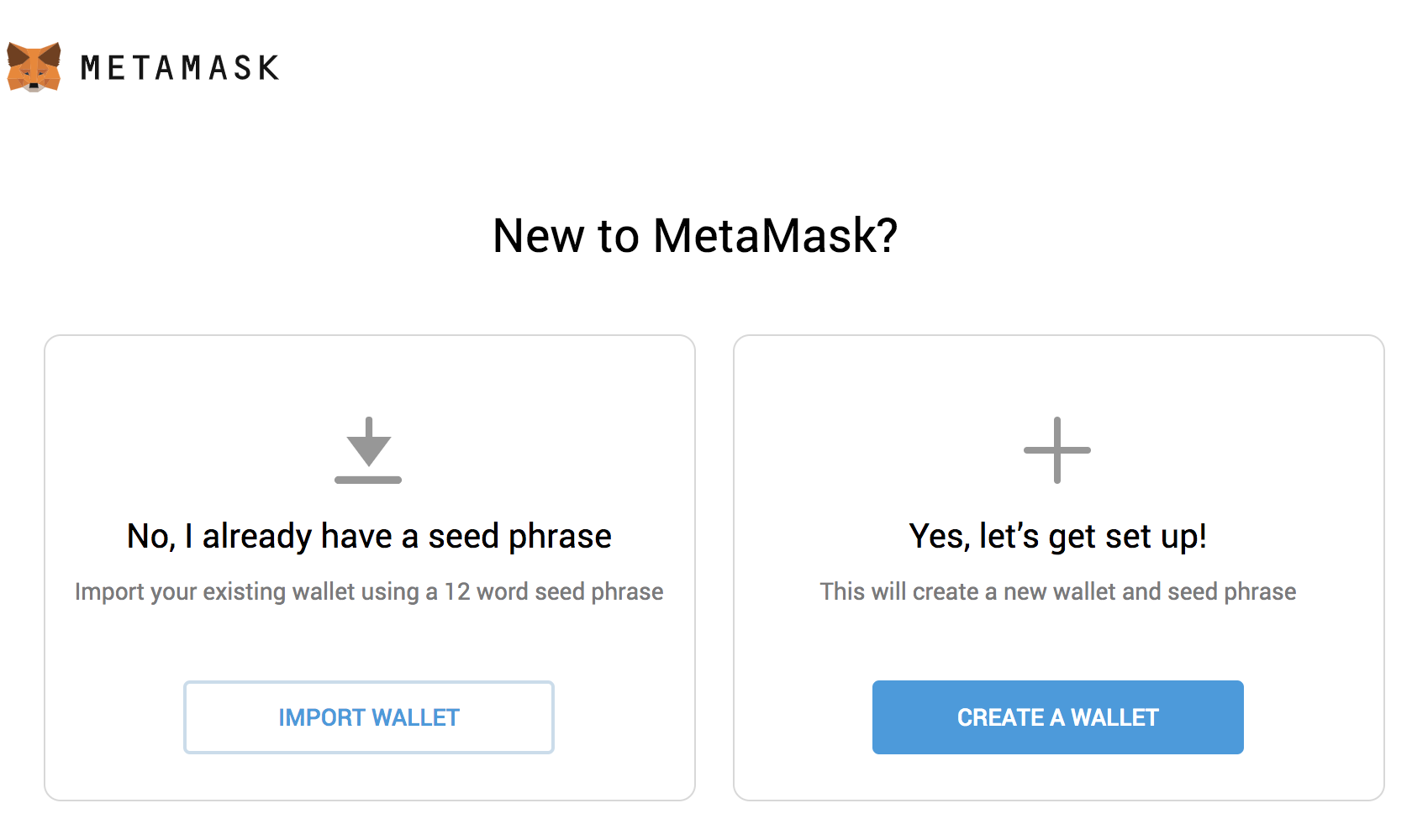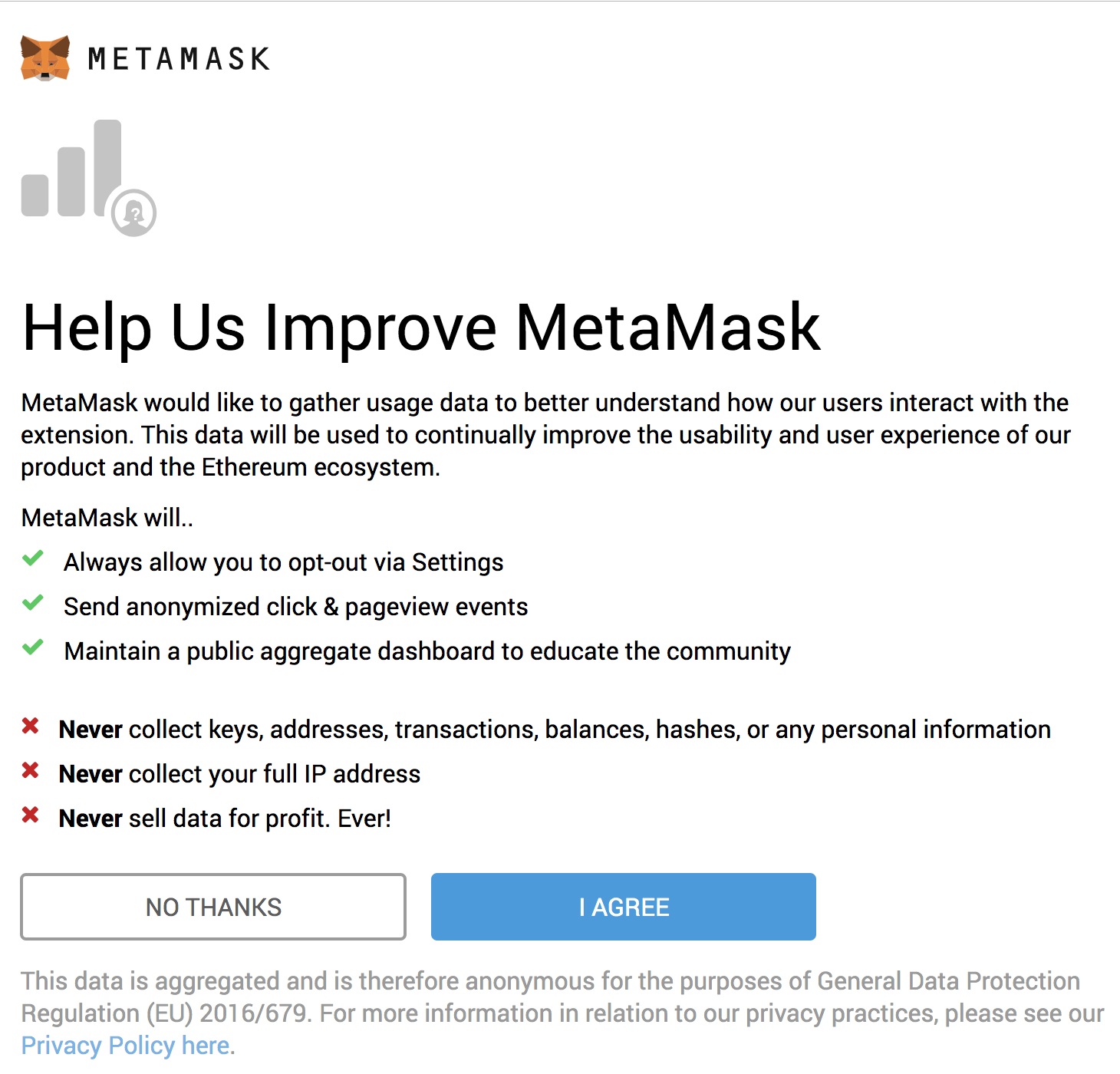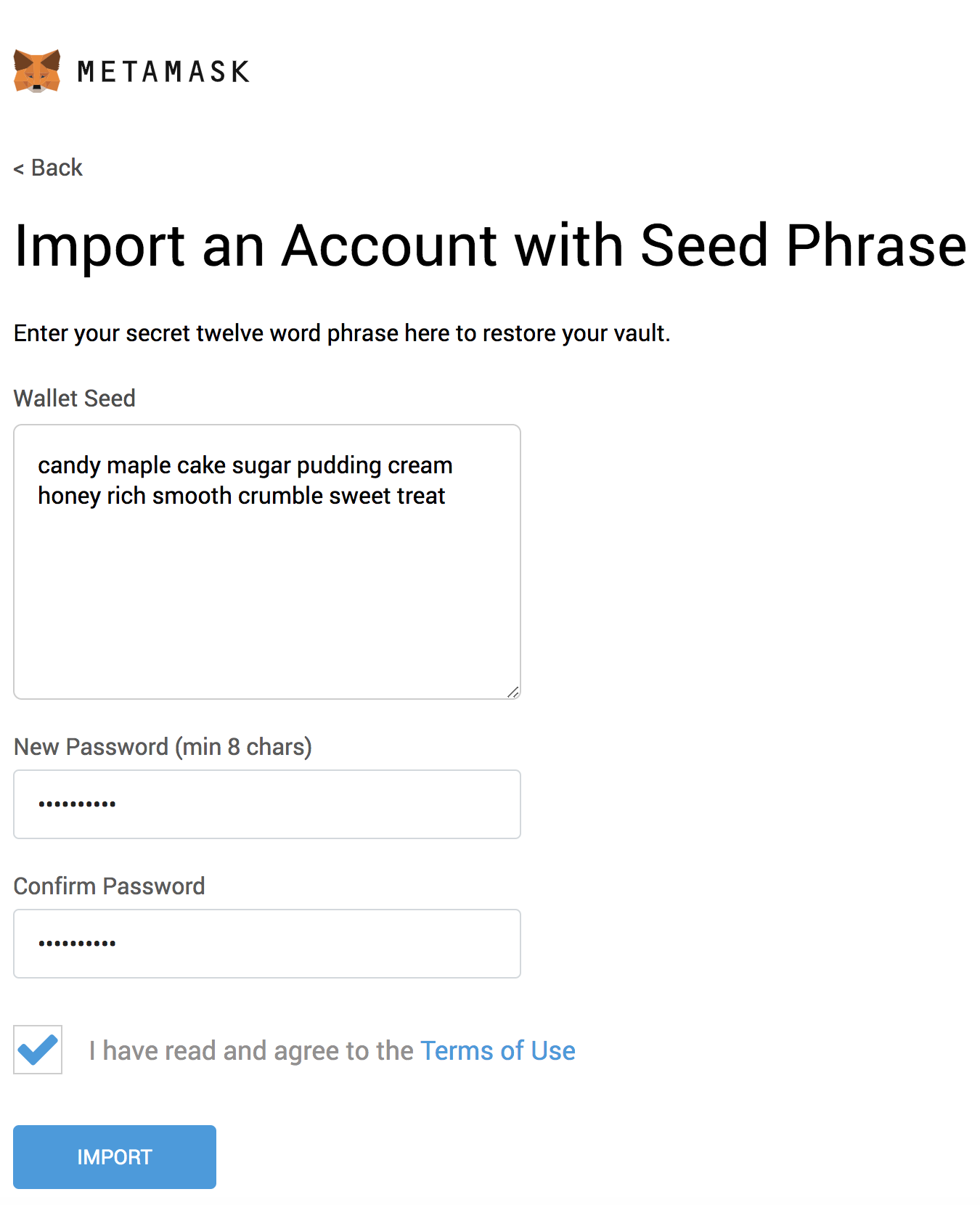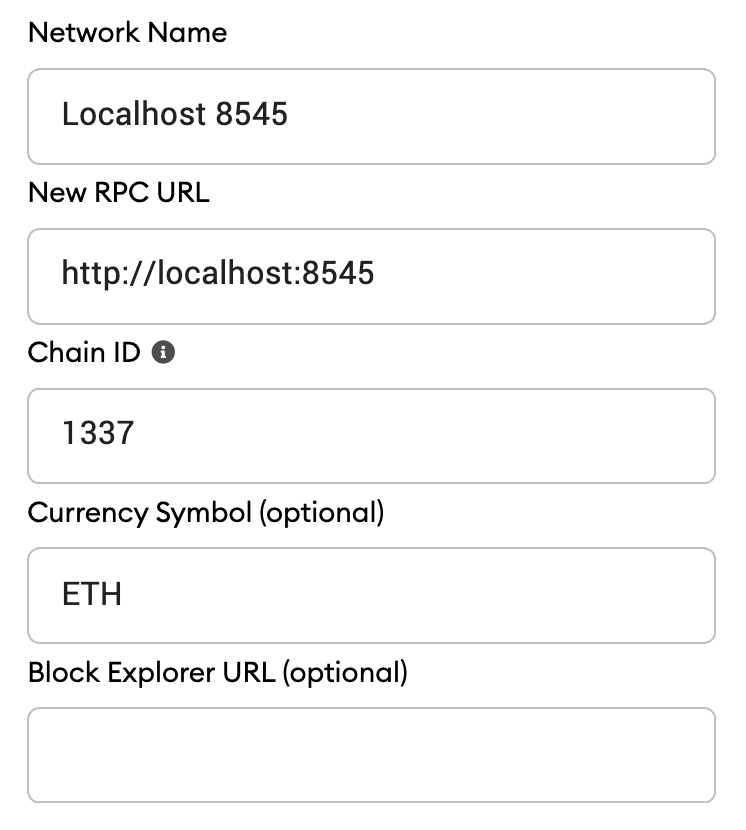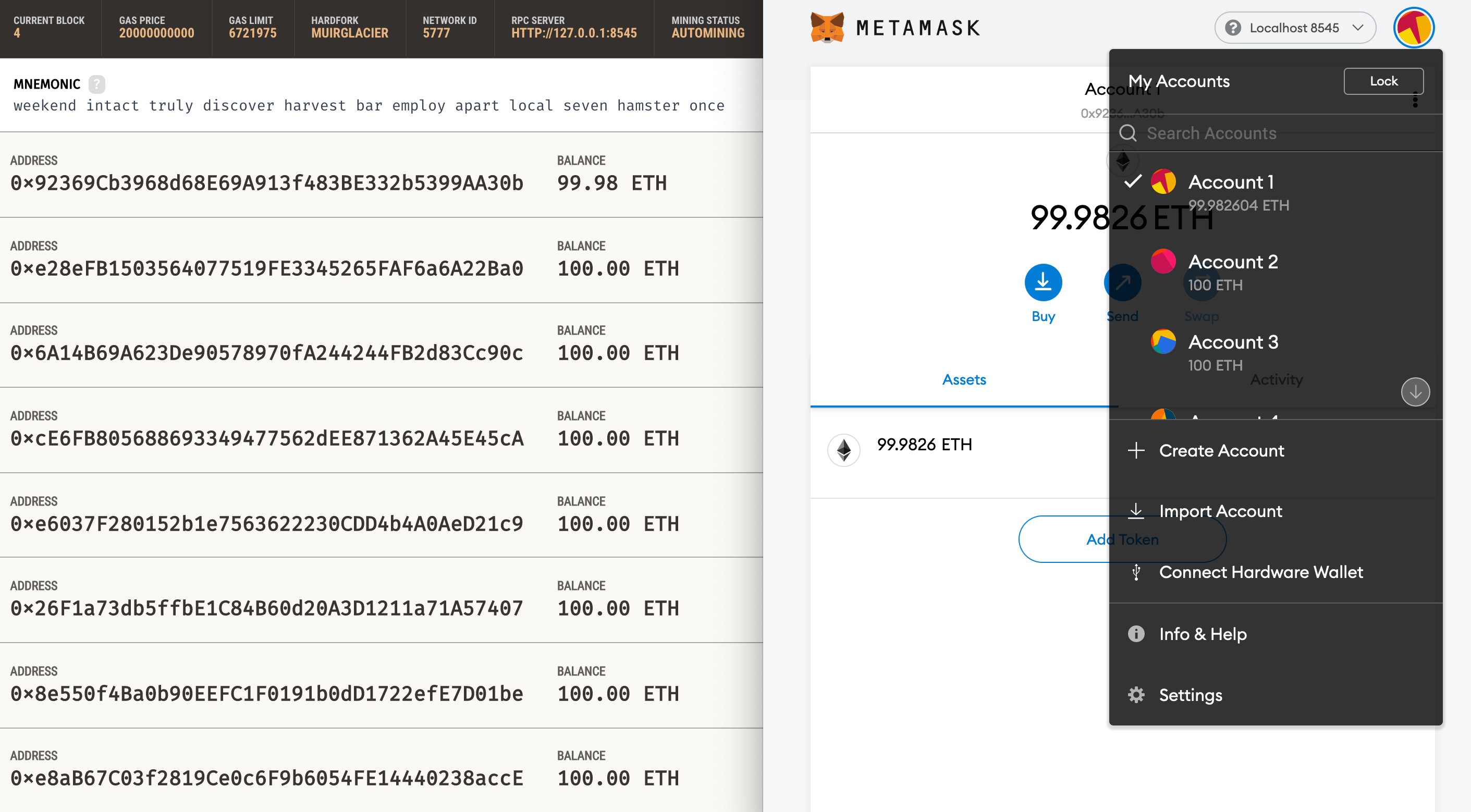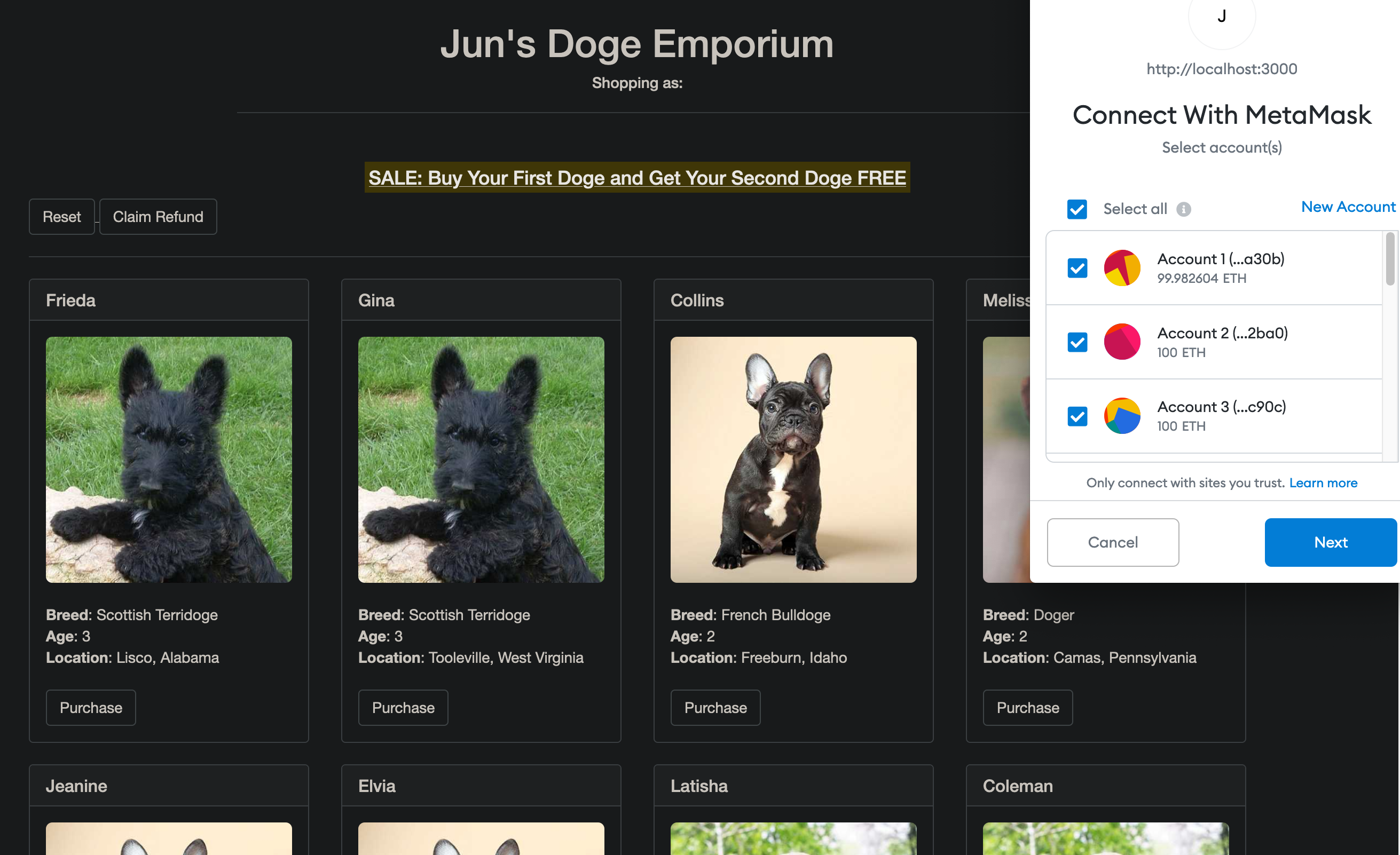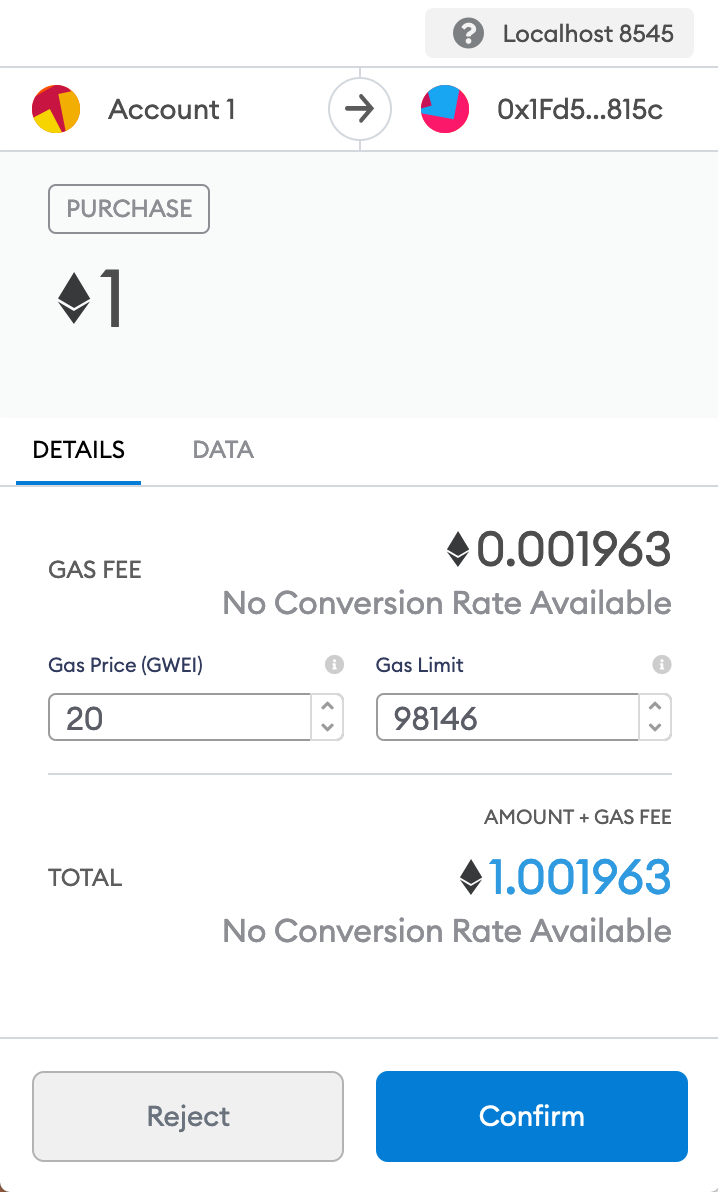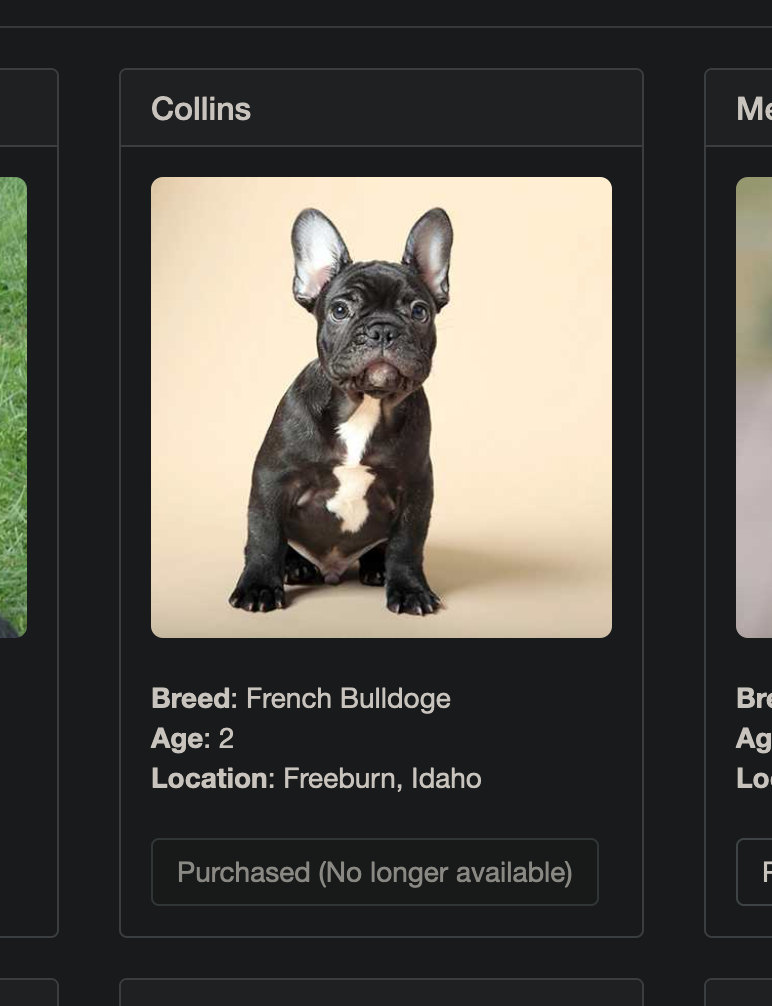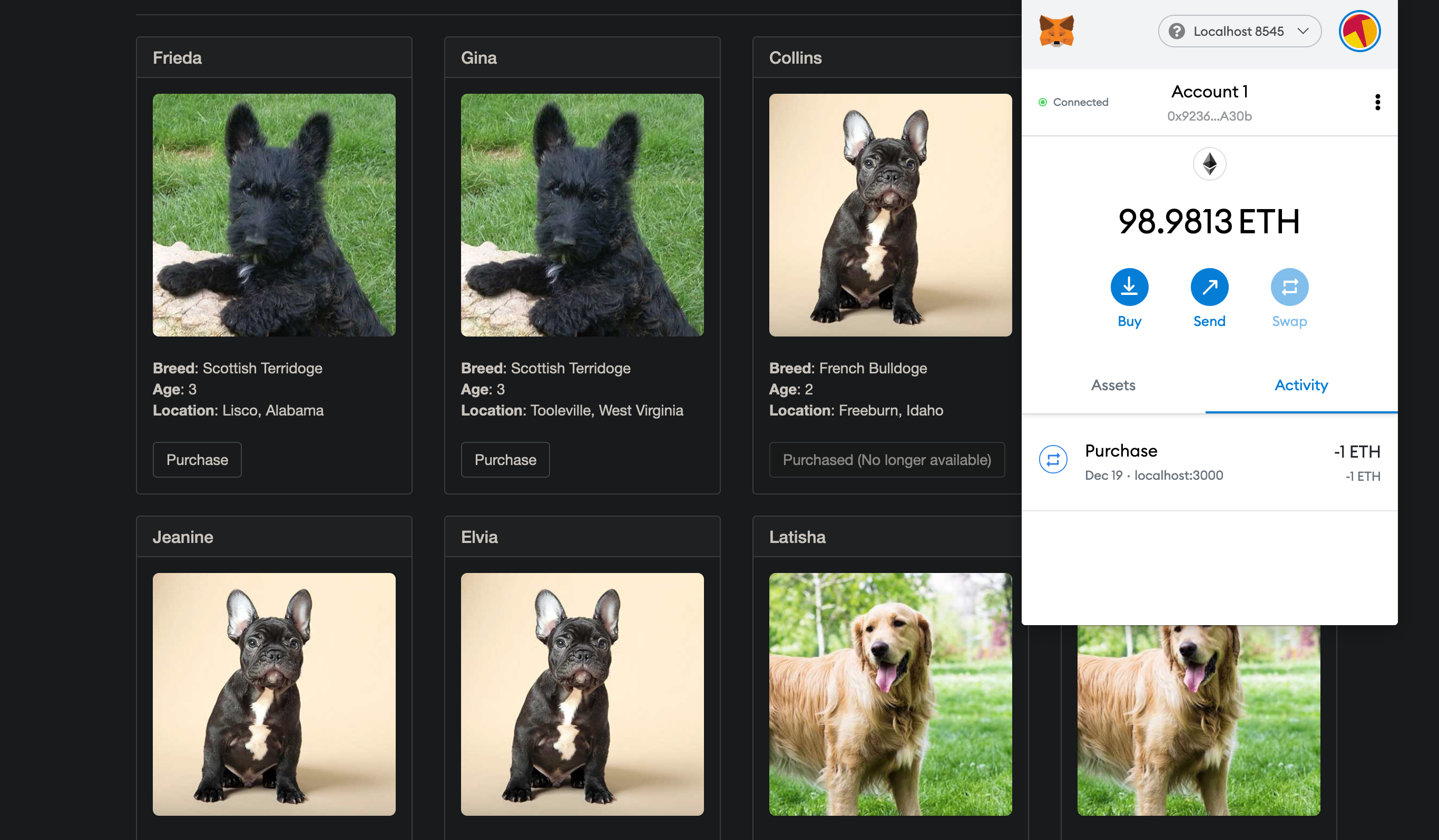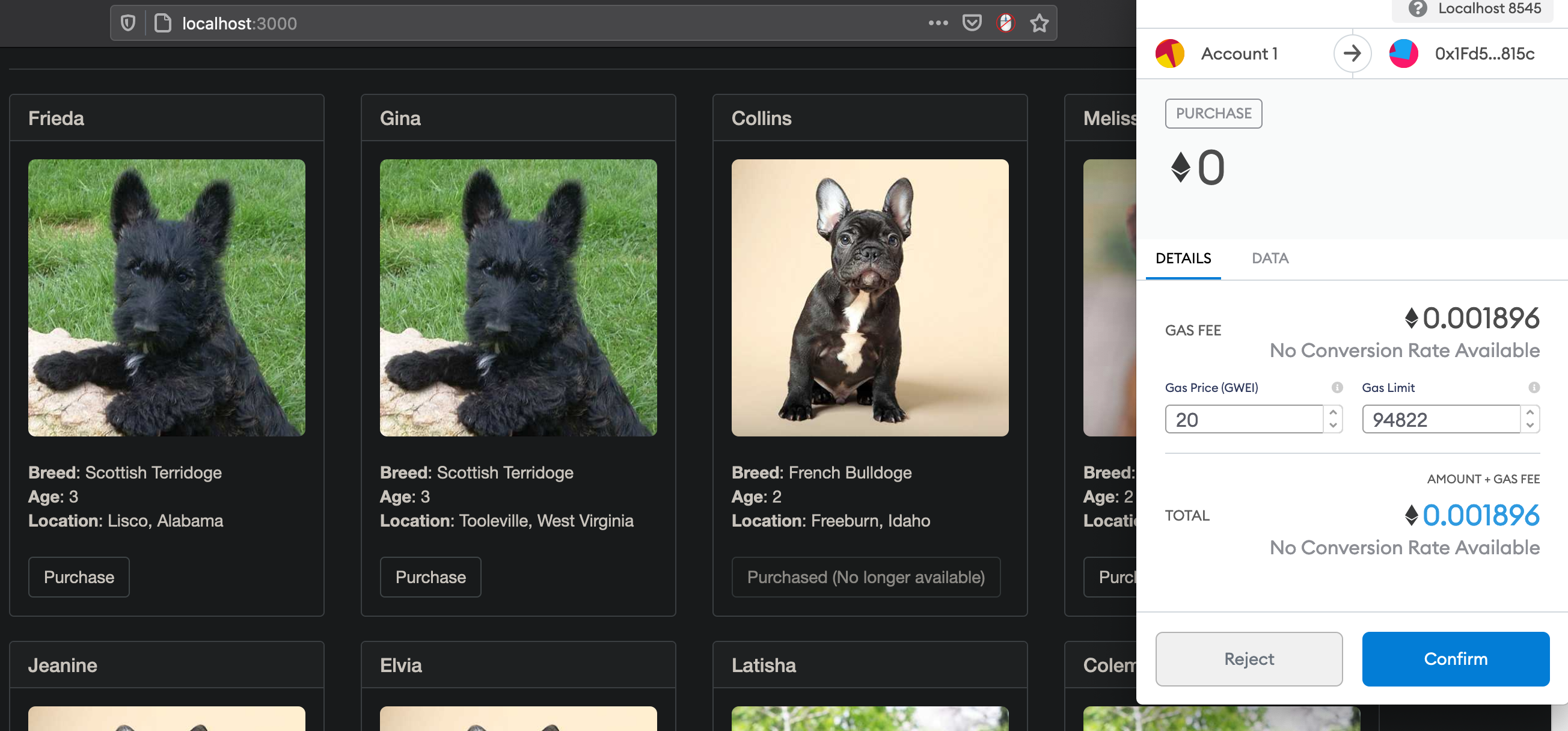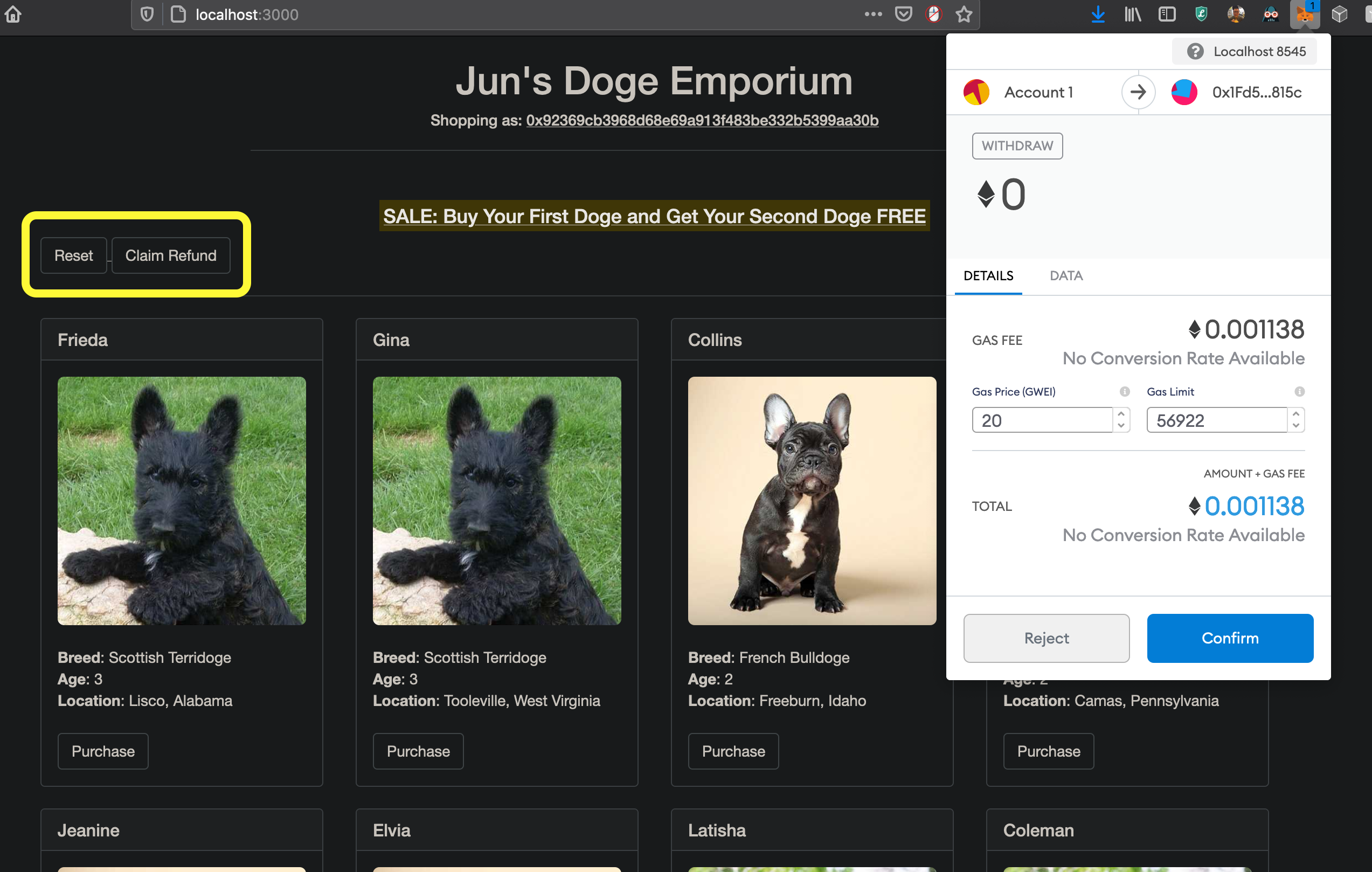Doge Deluxe is an expanded dapp based on Truffle's Pet Shop Tutorial, with our shop offering the classic discount: "Buy one, get (the second) one free!"
To buy a doge, the user needs to connect their MetaMask Wallet. Once connected, the user's current wallet address will display below the shop logo. The owner of the shop can also revert all transactions, which allows customers to withdraw amounts they spent int the store. Only the owner can reset shop transactions and only customers who previously bought a doge may withdraw ETH.
There are a few technical requirements before we start. Please install the following:
Once we have those installed, we only need one command to install Truffle:
npm install -g truffleClone this repo to your local machine:
git clone https://github.com/jun-sung/doge-deluxe.git
cd doge-deluxeThen install all the project dependencies:
npm installSolidity is a compiled language, meaning we need to compile our Solidity to bytecode for the Ethereum Virtual Machine (EVM) to execute. Since our DApp is setup as a Truffle project, we'll be utilizing Truffle's command tools to compile, migrate, and test our smart contract on a local blockchain.
Within the project directory, run the following commands in the terminal:
truffle compileYou should see output similar to the following:

If there are no errors, we've successfully compiled our contracts and now we can migrate them to the blockchain!
Before we can migrate our contract to the blockchain, we need to have a blockchain running. In this walkthrough, we'll use Ganache, a personal blockchain for Ethereum development you can use to deploy contracts, develop applications, and run tests. If you haven't already, download Ganache and double click the icon to launch the application.
You can also run the command line version, ganache-cli via npm:
npm install -g ganache-cliBy default, Ganache should be running on port 7545. The details can be seen in the RPC Server.
Our truffle-config.js file is currently set to run development on Port 8545.
networks: {
development: {
host: "127.0.0.1",
port: 8545,
network_id: "*" // Match any network id
},
}So change the Port Number to 8545 under the Server tab in Settings.
Back in our terminal, migrate the contract to the blockchain.
truffle migrateYou should see output similar to the following:
If migration is successful, we can now run the pre-written Solidity tests:
truffle testIf all the tests pass, you'll see console output similar to this:
Now we're ready to use our DApp!
The easiest way to interact with our dapp in a browser is through MetaMask, a browser extension for both Chrome and Firefox.
-
Install MetaMask in your browser.
-
Once installed, a tab in your browser should open displaying the following:
-
After clicking Getting Started, you should see the initial MetaMask screen. Click Import Wallet.
-
Next, you should see a screen requesting anonymous analytics. Choose to decline or agree.
-
In the box marked Wallet Seed, enter the mnemonic that is displayed in Ganache.
Warning: Do not use this mnemonic on the main Ethereum network (mainnet). If you send ETH to any account generated from this mnemonic, you will lose it all!
Enter a password below and click Import.
-
If all goes well, MetaMask should display the following screen. Click All Done.
-
Now we need to connect MetaMask to the blockchain created by Ganache. Click the menu that shows "Main Network" and select Custom RPC.
-
In the box titled "Network Name" enter
Localhost 8545, in "New RPC URL" enterhttp://127.0.0.1:8545, in "Chain ID" enter1337, and click Save. -
Click the top-right X to close out of Settings and return to the Accounts page.
Each account created by Ganache is given 100 ether. You'll notice it's slightly less on the first account because some gas was used when the contract itself was deployed and when the tests were run. You should also see this correspond with the display on Ganache GUI.
Configuration is now complete.
- Start the local web server:
npm run devThe dev server will launch and automatically open a new browser tab containing your DApp.
-
A MetaMask pop-up should also appear requesting your approval to allow Doge Deluxe to connect to your MetaMask wallet. Without explicit approval, you will be unable to interact with the dapp. Click Connect.
The active wallet address will now be displayed under the store name (Shopping as: 0x...).
-
To use the DApp, click the Purchase button on the doge of your choice. Each doge is priced at 1 ETH.
-
You'll be automatically prompted to approve the transaction costing 1 ETH (excluding gas fees) by MetaMask. Click Confirm to approve the transaction.
-
The page should refresh automatically and you'll now see the button for the chosen doge display "Purchased (No longer available)" and become disabled.
And in MetaMask, you'll see the transaction listed:
> You'll also see the same transaction listed in Ganache under the "Transactions" section and new ETH balance for the corresponding address.
-
In order to use the shop discount, select another doge. MetaMask should now prompt you with a transaction costing 0 ETH.
-
The wallet address that established the contract is the owner of the shop. Only the owner has access to the Reset button. The Reset button reverts all previous transactions at the shop and costs 0 ETH. Once reset, a Withdraw button becomes available. Only customers who have spent ETH before the reset will have access to the Withdraw button.
Here's a condensed version of step 7 where the owner purchases 2 doges with the shop discount, resets the store and withdraws the 1 ETH previously spent:
The wallet has virtually returned to the original balance of 100 ETH minus gas fees from contract migration and transactions.
Here's a video walkthrough of the DApp in action.
| File | Description |
|---|---|
| design_pattern_decisions.md | Smart contract design rationale |
| avoiding_common_attacks.md | Security measures against hacks |
| deployed_addresses.txt | Ropsten testnet deployment info |
- Update Screenshots
- Add onlyOwner withdraw function
function withdraw() external onlyOwner {
address payable _owner = address(uint160(owner()));
_owner.transfer(address(this).balance);
}
- Reconfigure previous withdraw function as claimRefund
- Add one or more tests to TestPurchase.sol and add corresponding events in Purchase.sol
- Update DogeDeluxe.js with tests
- Implement ERC721.sol for tokenizing and allowing customers to swap doges
- Test and finalize web3/MetaMask boilerplate in index.html
- Simplify truffle-config.js and README.md to use default Port 7545
- Add different types of dogs
- Stylize buttons
- Display doges purchased by customer in index.html (in another window or pop-up alert)
function displayDoges(ids) {
$("#doges").empty();
for (id of ids) {
// Look up doge details from our contract. Returns a `doge` object
getDogeDetails(id)
.then(function(doge) {
// Using ES6's "template literals" to inject variables into the HTML.
// Append each one to our #doges div
$("#doges").append(`<div class="doge">
<ul>
<li>Name: ${doge.name}</li>
<li>Breed: ${doge.breed}</li>
<li>Age: ${doge.age}</li>
<li>Location: ${doge.location}</li>
</ul>
</div>`);
});
}
}
// Create struct in Purchase.sol
struct doge {
string name;
string breed;
uint age;
string location;
}
- Reflect doge purchase by displaying on dapp front-end via an event listener
// Create event in Purchase.sol
event Purchased(uint dogeId, string name, string breed); // dogeId = tokenId?
// Subscribe to events in index.html
// Add this code at the end of the startApp function to make sure the dogeDeluxe contract has been initialized before adding an event listener
dogeDeluxe.events.Purchased()
.on("data", function(event) {
let doge = event.returnValues;
// We can access this event's 3 return values on the `event.returnValues` object:
console.log(name + " was successfully purchased!", doge.dogeId, doge.name, doge.breed);
}).on("error", console.error);
// Use `filter` to only fire this code when `_to` equals `userAccount`
dogeDeluxe.events.Transfer({ filter: { _to: userAccount } }) // Transfer is located in ERC721.sol
.on("data", function(event) {
let data = event.returnValues;
// The current user just received a doge!
// Do something here to update the UI to show it
getDogesByOwner(userAccount).then(displayDoges);
}).on("error", console.error);
// Query past events | Using events as cheaper form of storage
dogeDeluxe.getPastEvents("DogePurchased", { fromBlock: 0, toBlock: "latest" })
.then(function(events) {
// `events` is an array of `event` objects that we can iterate, like we did above
// This code will get us a list of every doge that was ever purchased
});
